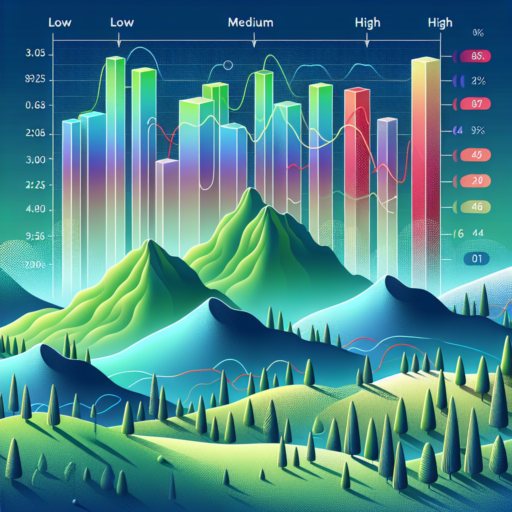No se han encontrado productos.
What should my SpO2 be at high altitude?
Understanding your SpO2, or oxygen saturation levels, is critical when you’re at high altitudes. The reason is straightforward: as altitude increases, oxygen concentration in the air decreases, which can lead to lower oxygen levels in your blood. But what exactly should your SpO2 be when you’re high up?
Generally, a healthy SpO2 value at sea level ranges from 95% to 100%. However, as you ascend beyond 2,500 meters (about 8,200 feet), your SpO2 is expected to decrease. It’s not unusual for individuals at high altitudes (around 3,000 to 5,000 meters or roughly 10,000 to 16,400 feet) to have SpO2 levels between 90% and 92%. This is considered normal in high-altitude environments, but it’s crucial to monitor these levels to prevent altitude sickness or more severe forms of oxygen deprivation.
At extremely high altitudes, above 5,500 meters (approximately 18,000 feet), SpO2 can drop even further, often below 90%. In such scenarios, acute monitoring is essential, and supplementary oxygen might be required to maintain adequate oxygen saturation and ensure the safety and wellness of the individual.
How much less oxygen is there at high altitude?
At higher altitudes, the concentration of oxygen in the air decreases significantly, a change that can have a profound impact on the human body. While the percentage of oxygen in the air remains roughly constant at about 21%, the density of the air itself reduces, leading to fewer oxygen molecules in any given lungful of air. This phenomenon can begin to be noticeable at altitudes above 2,500 meters (8,200 feet).
The decrease in oxygen availability is mathematically predictable and considerable. For example, at 3,000 meters (about 9,840 feet), the air contains roughly 14% less oxygen than at sea level. This deficiency becomes more pronounced as altitude increases: at 4,000 meters (about 13,123 feet), there’s around 20% less oxygen, and at 5,500 meters (about 18,045 feet) the oxygen content drops by nearly 30%. These figures illustrate the severity of oxygen scarcity faced by climbers, hikers, and residents at high altitudes.
Elevation not only reduces the oxygen content but also affects air pressure, further compounding the difficulty of obtaining oxygen. This results in what is commonly known as «thin air» – air with reduced oxygen pressure. It’s this reduced pressure that can lead to altitude sickness and other altitude-related health issues, as the body struggles to take in the oxygen it needs. Adapting to these conditions, through acclimatization, is crucial for those visiting or living at high elevations.
What is a normal oxygen saturation level by age?
Understanding the normal oxygen saturation levels by age is crucial as it helps identify if a person’s organs are getting enough oxygen, which is vital for their functioning. Oxygen saturation, often measured using a pulse oximeter, indicates the percentage of oxygen-saturated hemoglobin in the blood. While there’s a general range considered normal for healthy individuals, slight variations can occur based on age, among other factors.
For most healthy individuals, regardless of age, a normal oxygen saturation level typically ranges from 95% to 100%. However, infants and particularly newborns might have slightly lower baseline levels in their first few minutes of life before stabilizing within the typical range. It’s important to note that specific health conditions, altitude, and physical activities can influence these numbers, making periodic monitoring essential for certain age groups and individuals with chronic health issues.
In the elderly population, it’s not uncommon to see oxygen saturation levels on the lower end of the normal range. Factors such as decreased lung capacity, changes in the respiratory system’s mechanics, and the presence of chronic illnesses can slightly reduce baseline oxygen saturation. Nonetheless, levels below 95% should prompt further evaluation, especially if accompanied by symptoms like shortness of breath, chest pain, or confusion.
What is a dangerously low oxygen level?
Understanding what constitutes a dangerously low oxygen level is crucial for maintaining overall health and addressing potential medical emergencies. The human body requires a certain level of oxygen in the blood to function correctly. Typically, a healthy oxygen saturation level ranges from 95% to 100%. When oxygen levels drop below 95%, it is considered lower than what is normal for most people, but a reading under 90% is regarded as a dangerously low oxygen level. This condition, known medically as hypoxemia, can lead to critical symptoms and requires immediate medical attention.
Hypoxemia can manifest through various signs and symptoms, indicating that the body is not receiving enough oxygen. Some of the symptoms to watch out for include shortness of breath, increased heartbeat, sweating, wheezing, and changes in the color of the skin or nails, often turning bluish (a condition known as cyanosis). People experiencing these symptoms should seek medical advice promptly as prolonged oxygen deprivation can lead to severe complications, including damage to the body’s vital organs.
The causes of dangerously low oxygen levels can vary widely, from respiratory conditions like COPD (Chronic Obstructive Pulmonary Disease) and asthma to heart-related issues and exposure to environments with low oxygen levels. Immediate steps to address hypoxemia involve administering oxygen to increase the patient’s blood oxygen levels and treating the underlying cause of the oxygen deprivation. In severe cases, hospitalization may be necessary to closely monitor the patient and provide more comprehensive treatment options.
It’s essential to understand that while temporary dips in oxygen levels can be normal, especially during sleep or at high altitudes, consistent readings of below 90% indicate a severe problem that should not be ignored. Monitoring oxygen levels, especially in individuals with pre-existing health conditions, can be a crucial part of managing overall health and preventing potentially life-threatening issues.




